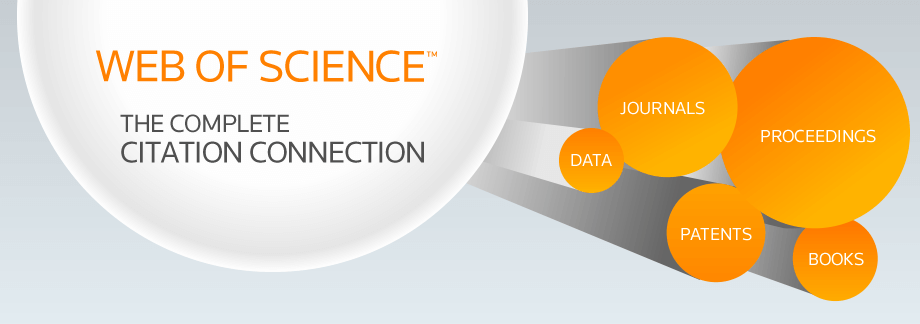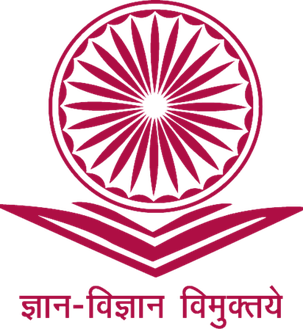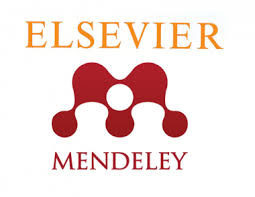INTERNATIONAL JOURNAL OF CREATIVE RESEARCH THOUGHTS - IJCRT (IJCRT.ORG)
International Peer Reviewed & Refereed Journals, Open Access Journal
IJCRT Peer-Reviewed (Refereed) Journal as Per New UGC Rules.
ISSN Approved Journal No: 2320-2882 | Impact factor: 7.97 | ESTD Year: 2013
Call For Paper - Volume 13 | Issue 11 | Month- November 2025
Scholarly open access journals, Peer-reviewed, and Refereed Journals, Impact factor 7.97 (Calculate by google scholar and Semantic Scholar | AI-Powered Research Tool) , Multidisciplinary, Monthly, Indexing in all major database & Metadata, Citation Generator, Digital Object Identifier(CrossRef DOI)
Contact Us Click Here
WhatsApp Contact Click Here
Volume 9 | Issue 1 |
| IJCRT Journal front page | IJCRT Journal Back Page |
Paper Title: INDIA- RUSSIA ECONOMIC, TRADE, AND VARIOUS RELATIONS
Author Name(s): Miss mitali meshram, Dr. Ajay Chandrakar
Published Paper ID: - IJCRT2101011
Register Paper ID - 201914
Publisher Journal Name: IJPUBLICATION, IJCRT
DOI Member ID: 10.6084/m9.doi.one.IJCRT2101011 and DOI : http://doi.one/10.1729/Journal.25401
Author Country : Indian Author, 491665, India , rajnandgaon, India , | Research Area: Medical Science Published Paper URL: http://ijcrt.org/viewfull.php?&p_id=IJCRT2101011 Published Paper PDF: download.php?file=IJCRT2101011 Published Paper PDF: http://www.ijcrt.org/papers/IJCRT2101011.pdf
Your Paper Publication Details:
Title: INDIA- RUSSIA ECONOMIC, TRADE, AND VARIOUS RELATIONS
DOI (Digital Object Identifier) : http://doi.one/10.1729/Journal.25401
Pubished in Volume: 9 | Issue: 1 | Year: January 2021
Publisher Name : IJCRT | www.ijcrt.org | ISSN : 2320-2882
Subject Area: Medical Science
Author type: Indian Author
Pubished in Volume: 9
Issue: 1
Pages: 84-90
Year: January 2021
Downloads: 1671
E-ISSN Number: 2320-2882
Abstract
India and Russia shared decades of close bond at the highest levels during the Soviet era. Indeed, as early as 1992, India and Russia had negotiated arms agreements worth $650 million. A particularly high point since then has been the evolution from �a purely buyer-seller relationship to joint research, design development and production of state-of-the-art military platforms,� a successful example of it being Brahmos missile. from �a purely buyer-seller relationship to joint research, design development and production of state-of-the-art military platforms,� With an eye on the future, several pacts on cooperation in energy, power, shipbuilding, space and smart cities were signed. Modi and Putin also witnessed the foundation laying ceremony of Units 3 and 4 of Kudankulam nuclear plan, giving a major boost to defence equipment�s, India and Russia signed pacts on purchase of four naval frigates and air defence systems along with a pact for joint production of 200 Kamov 226T helicopters apart from that, more than 70 years of the diplomatic relations between the two countries have been marked by a high degree of convergence on various bilateral and global matters . Both India and Russia are part of non-Western organisations such as SCO and BRICS which has gained geopolitical significance in recent years. Both the country along with other member states, strive towards the establishment of a bloc free geopolitical architecture. the trade relationship clearly needed revamp with bilateral trade having reached a mere $9.51 billion in 2014 which was nowhere near the goal of $20 billion by 2015. The Druzbha-Dosti 2014 joint statement then set the target of attaining the trade level of $30 billion by 2025. the two countries to overcome the old romanticism of the Indo-Soviet ties and engage at a pragmatic level. Today there is no denying the mutual trust and friendship that exists between the two countries.
Licence: creative commons attribution 4.0
License
Keywords
Bilateral, Trade, Vivify, Treaty, diplomatic, Friendship, Defense
License
Paper Title: RETURN AND RISK ANALYSIS OF MUTUAL FUND IN INDIA.
Author Name(s): DR AMISH B. SONI, Mr. Milin Kansara
Published Paper ID: - IJCRT2101009
Register Paper ID - 201913
Publisher Journal Name: IJPUBLICATION, IJCRT
DOI Member ID: 10.6084/m9.doi.one.IJCRT2101009 and DOI :
Author Country : Indian Author, 380001, India , AHMEDABAD, India , | Research Area: Management Published Paper URL: http://ijcrt.org/viewfull.php?&p_id=IJCRT2101009 Published Paper PDF: download.php?file=IJCRT2101009 Published Paper PDF: http://www.ijcrt.org/papers/IJCRT2101009.pdf
Your Paper Publication Details:
Title: RETURN AND RISK ANALYSIS OF MUTUAL FUND IN INDIA.
DOI (Digital Object Identifier) :
Pubished in Volume: 9 | Issue: 1 | Year: January 2021
Publisher Name : IJCRT | www.ijcrt.org | ISSN : 2320-2882
Subject Area: Management
Author type: Indian Author
Pubished in Volume: 9
Issue: 1
Pages: 65-73
Year: January 2021
Downloads: 1623
E-ISSN Number: 2320-2882
Abstract
The research focuses on the risk and return parameter for five different types of mutual funds in India. Here in this paper we had included sharpe ratio with the help of the returns, standard deviation and risk free returns and also treynor ratio with the help of the returns, Beta, standard deviation and risk free return with the help of the NAVs.
Licence: creative commons attribution 4.0
License
Keywords
Sharpe, Treynor, Mutual fund
License
Paper Title: ``THE POST-HUMANIST LOGOS``: THE POLITICAL DOGS IN NABARUN BHATTACHARYA`S LUBDHAK.
Author Name(s): Krishnapada Mandal
Published Paper ID: - IJCRT2101008
Register Paper ID - 201928
Publisher Journal Name: IJPUBLICATION, IJCRT
DOI Member ID: 10.6084/m9.doi.one.IJCRT2101008 and DOI :
Author Country : Indian Author, 723101, India , Purulia, India , | Research Area: Languages Published Paper URL: http://ijcrt.org/viewfull.php?&p_id=IJCRT2101008 Published Paper PDF: download.php?file=IJCRT2101008 Published Paper PDF: http://www.ijcrt.org/papers/IJCRT2101008.pdf
Your Paper Publication Details:
Title: ``THE POST-HUMANIST LOGOS``: THE POLITICAL DOGS IN NABARUN BHATTACHARYA`S LUBDHAK.
DOI (Digital Object Identifier) :
Pubished in Volume: 9 | Issue: 1 | Year: January 2021
Publisher Name : IJCRT | www.ijcrt.org | ISSN : 2320-2882
Subject Area: Languages
Author type: Indian Author
Pubished in Volume: 9
Issue: 1
Pages: 58-64
Year: January 2021
Downloads: 1708
E-ISSN Number: 2320-2882
Abstract
Abstract: Posthumanism takes a critical stance towards humanism and it urges humans to respect and respond to non-human worlds and to reject the essentialist and hierarchical divisions between culture and nature. The aim of my article is to explore how the dogs in Nabarun Bhattacharya�s Lubdhak (2006) take part in the post-humanist logos and interrogate the exploitation of animals. The novel opens a new discourse regarding animal life and rights and situates the animals at the centre of the text. The essay aims at recognizing the power of animals to interrupt, surprise, and reconstitute human commonality. Its focus is on how the street dogs� organization and their discourse on Human (its development, rationalism, invention, use and misuse of scientific knowledge) challenge and interrupt anthropocentrism. It will be argued how far the gaze of the animal breaks the hold of reason�s plan by admitting an �alterity� to reason within the temporal continuum.
Licence: creative commons attribution 4.0
License
Keywords
Keywords: Nabarun Bhattacharya; post-anthropocentric subject; animal gaze; empathy; alterity.
License
Paper Title: PHARMACOGNOSY OF GINGER OFFICINALE
Author Name(s): VIKASH KUMAR GUPTA , Piyush Yadav, VISHAL PRAJAPATI, SURAJ MAURYA, MANISH KUMAR MAURYA
Published Paper ID: - IJCRT2101007
Register Paper ID - 201872
Publisher Journal Name: IJPUBLICATION, IJCRT
DOI Member ID: 10.6084/m9.doi.one.IJCRT2101007 and DOI :
Author Country : Indian Author, 222139, India , JAUNPUR, India , | Research Area: Pharmacy Published Paper URL: http://ijcrt.org/viewfull.php?&p_id=IJCRT2101007 Published Paper PDF: download.php?file=IJCRT2101007 Published Paper PDF: http://www.ijcrt.org/papers/IJCRT2101007.pdf
Your Paper Publication Details:
Title: PHARMACOGNOSY OF GINGER OFFICINALE
DOI (Digital Object Identifier) :
Pubished in Volume: 9 | Issue: 1 | Year: January 2021
Publisher Name : IJCRT | www.ijcrt.org | ISSN : 2320-2882
Subject Area: Pharmacy
Author type: Indian Author
Pubished in Volume: 9
Issue: 1
Pages: 51-57
Year: January 2021
Downloads: 2659
E-ISSN Number: 2320-2882
Abstract
We are found the 350,000 species of plants which are found in earth, these plant are produce great medicinal properties. The plant of Ginger is also known as Gingerin, Rhizoma zingiberis, Zingibere and Ginger Officinale which is belong from the family of Zingiberaceae. The ginger rhizome is yellowish green colored. The ginger plant is very useful across the world-wide and it can be cultivated in dry and nutritional condition. The plant is consitituent with following chemical consitituents which are play a vital role in medicinal field. It is used to treatment and prevention of various diseases such as cough, morning sickness, motion sickness, vomiting after surgery, respiratory problems and bronchitis.
Licence: creative commons attribution 4.0
License
Keywords
Introduction, Biological source, Geographical source, Botanical classification, Vascular name, Organoleptic property, Microscopic property, Cultivation, Chemical consitituents, Pharmaceutical uses
License
Paper Title: AWARENESS, USE AND USEFULNESS OF ELECTRONIC INFORMATION RESOURCES ON THE SCIENTIFC STAFF OF THE LIBRARIES OF ICAR INSTITUTIONS IN SOUTH INDIA.
Author Name(s): Dr. Lalitha K. Sami, Mr. Prasanna Devaramatha Anilkumar
Published Paper ID: - IJCRT2101006
Register Paper ID - 201918
Publisher Journal Name: IJPUBLICATION, IJCRT
DOI Member ID: 10.6084/m9.doi.one.IJCRT2101006 and DOI :
Author Country : N, -, - , -, - , | Research Area: Science & Technology Published Paper URL: http://ijcrt.org/viewfull.php?&p_id=IJCRT2101006 Published Paper PDF: download.php?file=IJCRT2101006 Published Paper PDF: http://www.ijcrt.org/papers/IJCRT2101006.pdf
Your Paper Publication Details:
Title: AWARENESS, USE AND USEFULNESS OF ELECTRONIC INFORMATION RESOURCES ON THE SCIENTIFC STAFF OF THE LIBRARIES OF ICAR INSTITUTIONS IN SOUTH INDIA.
DOI (Digital Object Identifier) :
Pubished in Volume: 9 | Issue: 1 | Year: January 2021
Publisher Name : IJCRT | www.ijcrt.org | ISSN : 2320-2882
Subject Area: Science & Technology
Author type: N
Pubished in Volume: 9
Issue: 1
Pages: 43-50
Year: January 2021
Downloads: 1692
E-ISSN Number: 2320-2882
Abstract
An attempt is made to study the Awareness, Use and Usefulness of Electronic Information Resources among the Scientifc staff of ICAR Institutions in South India. Survey method and a questionnaire tool was used and results indicated that all the respondents of scientific staff used EIRs in the department followed by used EIRs in library. Among all the EIRs, internet , websites and ETDs are used by all the scientific respondents as the rate 9of 100percent. All scientific respondents of the opinion that internet and ETDs are 100 percent useful to their writing research papers and on going research work/project.
Licence: creative commons attribution 4.0
License
Keywords
Indian Council of Agriculture Research (ICAR), Electronic Information Resources (EIRs), Awareness, Use, Usefulness, Electronic Thesis and Dissertations (ETDs).
License
Paper Title: CORONA-VIRUS REVEALS AUTHORITARIANISM`S FATAL FLAW
Author Name(s): Asit Sardar
Published Paper ID: - IJCRT2101005
Register Paper ID - 201907
Publisher Journal Name: IJPUBLICATION, IJCRT
DOI Member ID: 10.6084/m9.doi.one.IJCRT2101005 and DOI : http://doi.one/10.1729/Journal.38783
Author Country : N, -, - , -, - , | Research Area: Science & Technology Published Paper URL: http://ijcrt.org/viewfull.php?&p_id=IJCRT2101005 Published Paper PDF: download.php?file=IJCRT2101005 Published Paper PDF: http://www.ijcrt.org/papers/IJCRT2101005.pdf
Your Paper Publication Details:
Title: CORONA-VIRUS REVEALS AUTHORITARIANISM`S FATAL FLAW
DOI (Digital Object Identifier) : http://doi.one/10.1729/Journal.38783
Pubished in Volume: 9 | Issue: 1 | Year: January 2021
Publisher Name : IJCRT | www.ijcrt.org | ISSN : 2320-2882
Subject Area: Science & Technology
Author type: N
Pubished in Volume: 9
Issue: 1
Pages: 31-42
Year: January 2021
Downloads: 1645
E-ISSN Number: 2320-2882
Abstract
Authoritarian blindness is a perennial problem, especially in large countries like China with centralized, top-down administration. Indeed, Xi would not even be the first Chinese ruler to fall victim to the totality of his own power. On August 4, 1958, buoyed by reports pouring in from around the country of record grain, rice, and peanut production, an exuberant Chairman Mao Zedong wondered how to get rid of the excess, and advised people to eat �five meals a day.� Many did, gorging themselves in the new regime canteens and even dumping massive amounts of �leftovers� down gutters and toilets. Export agreements were made to send tons of food abroad in return for machinery or currency. Mao didn�t know famine was at hand, because he had set up a system that ensured he would hear lies. Smart rulers have tried to create workarounds to avoid this authoritarian dilemma. Dynastic China, for example, had institutionalized mechanisms to petition the emperor: a right that was theoretically granted to everyone, including the lowest farmers and the poorest city dwellers. This system was intended to check corruption in provinces and uncover problems, but in practice, it was limited in many ways, filtered through courtiers to a single emperor, who could listen to only so many in a day. Many rulers also cultivated their own independent sources of information in far-flung provinces. Thanks to technology, there is a much more robust option for authoritarians in the 21st century: big-data analytics in a digital public sphere. The public sphere in China during those years wasn�t a free-for-all, to be sure. One couldn�t call for collective action or for deposing the central government. But social media gave citizens a voice and a way to make an impact, and it served as an early-warning system for party leaders Authorities sometimes went as far as to pledge, in advance, to abide by the decisions of these bodies. For many years, such experiments flourished all over China and, combined with the digital public sphere, led scholars to wonder whether the �deliberative turn� in the country�s otherwise authoritarian state was not a means of weakening authoritarianism, but of making it more sustainable. An earlier hint that Xi�s China was falling into authoritarian blindness came during the on-going Hong Kong protests. The demonstrations had started over a minor demand�the withdrawal of an extradition bill of little strategic importance to Beijing. Protest is the traditional way that Hong Kongers, who do not have full voting rights, express discontent. But this time the Beijing insiders miscalculated. They genuinely believed that the real cause for the Hong Kong unrest was the high rents on the densely populated island, and also thought that the people did not support the protesters. Authoritarian blindness had turned an easily solvable problem into a bigger, durable crisis that exacted a much heavier political toll, a pattern that would repeat itself after a mysterious strain of pneumonia emerged in a Wuhan seafood market. In early December 2019, a strange cluster of patients from a local seafood market, which also sold wildlife for consumption, started showing up in Wuhan hospitals. These initial patients developed a fever and pneumonia that did not seem to be caused by any known viruses. Given the SARS experience of 2003, local doctors were quickly alarmed. With any such novel virus, medical providers are keen to know how it spreads: If the virus is unable to spread from human to human, it�s a tragedy, but a local one, and for only a few people. If it can sustainably spread from human to human, as was the case with SARS, it could turn into a global pandemic, with potentially massive numbers of victims. Given exponential growth dynamics of infectious diseases, containing an epidemic is straightforward early on, but nearly impossible once a disease spreads among a population. So it�s maximally important to identify and quarantine candidate cases as early as possible, and that means leadership must have access to accurate information. Before the month of December was out, the hospitals in Wuhan knew that the corona virus was spreading among humans. Medical workers who had treated the sick but never visited the seafood market were falling ill. On December 30, a group of doctors attempted to alert the public, saying that seven patients were in isolation due to a SARS-like disease. On the same day, an official document admitting both a link to the seafood market and a new disease was leaked online. On December 31, 2019, facing swirling rumours, the Wuhan government made its first official announcement, confirming 27 cases but, crucially, denying human-to-human transmission. Teams in hazmat suits were finally sent to close down the seafood market, though without explaining much to the befuddled, scared vendors. Things went on in this suspended state for another 10 days, while the virus kept spreading. Incredibly, on January 19, just one day after the death of yet another doctor who had become infected, officials from across the populous Hubei province held a 40,000-family outdoor banquet in Wuhan, its capital, as part of the official celebrations for China�s Lunar New Year. The dam broke on January 20�just three days before Wuhan would initiate a draconian lockdown that blocked millions of people from leaving. On that day, the respected SARS scientist Zhong Nanshan went on national television, confirming the new virus and human-to-human transmission. That same day, Xi Jinping gave his first public speech about the corona-virus, after he returned from an overseas trip to Myanmar. (1)
Licence: creative commons attribution 4.0
License
Keywords
Corona-Virus reveals authoritarianisms fatal flaw
License
Paper Title: GLOBALIZATION: IT`S IMPACT ON 21ST CENTURY
Author Name(s): Sangita Haloi
Published Paper ID: - IJCRT2101004
Register Paper ID - 201910
Publisher Journal Name: IJPUBLICATION, IJCRT
DOI Member ID: 10.6084/m9.doi.one.IJCRT2101004 and DOI :
Author Country : Indian Author, 781374, India , Nalbari Assam, India , | Research Area: Arts Published Paper URL: http://ijcrt.org/viewfull.php?&p_id=IJCRT2101004 Published Paper PDF: download.php?file=IJCRT2101004 Published Paper PDF: http://www.ijcrt.org/papers/IJCRT2101004.pdf
Your Paper Publication Details:
Title: GLOBALIZATION: IT`S IMPACT ON 21ST CENTURY
DOI (Digital Object Identifier) :
Pubished in Volume: 9 | Issue: 1 | Year: January 2021
Publisher Name : IJCRT | www.ijcrt.org | ISSN : 2320-2882
Subject Area: Arts
Author type: Indian Author
Pubished in Volume: 9
Issue: 1
Pages: 27-30
Year: January 2021
Downloads: 2347
E-ISSN Number: 2320-2882
Abstract
Globalization at present is a highly discuss issue today all over the world. Globalization in simple word means a greater intensification of interconnectedness and interdependence amongst the countries of the world. In the modern time, the impact of Globalization is a great threat to the very existence of languages, cultural practices, educational areas, and food habits etc. of indigenous communities because of the voluntary surrender to the modern ways of life leading to absolute obliteration of some traditional/indigenous cultures, traditions food habits, education in every sphere of life. This paper wants to study the impact of Globalization on the modern 21st century.
Licence: creative commons attribution 4.0
License
Keywords
Globalization, education, language, culture etc.
License
Paper Title: EVOLUTION OF BHARATNATYAM: FROM THE DANCE OF GODS TO THE DANCE OF GLORY
Author Name(s): Nageshwari Shetti
Published Paper ID: - IJCRT2101003
Register Paper ID - 201911
Publisher Journal Name: IJPUBLICATION, IJCRT
DOI Member ID: 10.6084/m9.doi.one.IJCRT2101003 and DOI :
Author Country : Indian Author, 400101, India , Mumbai, India , | Research Area: Arts Published Paper URL: http://ijcrt.org/viewfull.php?&p_id=IJCRT2101003 Published Paper PDF: download.php?file=IJCRT2101003 Published Paper PDF: http://www.ijcrt.org/papers/IJCRT2101003.pdf
Your Paper Publication Details:
Title: EVOLUTION OF BHARATNATYAM: FROM THE DANCE OF GODS TO THE DANCE OF GLORY
DOI (Digital Object Identifier) :
Pubished in Volume: 9 | Issue: 1 | Year: January 2021
Publisher Name : IJCRT | www.ijcrt.org | ISSN : 2320-2882
Subject Area: Arts
Author type: Indian Author
Pubished in Volume: 9
Issue: 1
Pages: 17-26
Year: January 2021
Downloads: 2070
E-ISSN Number: 2320-2882
Abstract
(Eldridge) stated dance to be an ancient and most celebrated culture of India. Folk dances are a part of the entire country. Most of the weddings, festivals and Indian cinema boast of a wide range of dance and music. The real origination of this culture lies in the classical dances of India. Classical dances of India or Shashtriya Nritya is an integral part of India�s culture and heritage. Most of these dance forms have their origination in temples where it was viewed to be as pious as a prayer. Although all these have originated from different regions yet most of these dances can be traced back to Bharata Muni�s �Natya Shastra.� With passage of time these dances have been improvised by various artists and dancers. The ultimate goal of any dance form is Rasanubhuti, which talks about the nine moods or rasas. Unlike folk dances, classical dances are about strict rules and technicalities. (Masodkar) Amongst the different classical dances of India, Bharatnatyam has been quite successful internationally. It has its origins of being a temple dance performed by the Devadasis. The songs which were used were devotional songs where the dancer was the devotee. Also the Nattuvanaras acted as a main leader of the troupe whose work would involve preserving and passing this dance style from one generation to the another generation while the Devadasis would perform it. But it also had to face a lot of struggles during the British colonial times. In spite of the various repercussions, there have been the pillars of Bharatnatyam whose relentless efforts were designed towards winning the battles against the odds for the revival of the art style and transform it into a Dance of Glory. India is a land of diversity. It has different cultures, religions, dances, music, languages and traditions. The people of India are the representatives of this rich diversity. But a lot of people lack the knowledge of the culture and heritage of India. Majority of the people failed to understand the plight undergone by the Devadasis and the challenges which the pioneers of Bharatnatyam had to undertake for revival and preservation of this dance style. Hence, the purpose of this research is to understand the relevance of this art form amongst the people of India. Also this study throws light on the plight of the Devadasis during the colonial times and describes their present conditions. This study also highlights the challenges faced by the various pioneers of Bharatnatyam and elaborates their contributions for maintaining the sanity of this beautiful dance style of India.
Licence: creative commons attribution 4.0
License
Keywords
Bharatnatyam, dance, devadasis, people, India
License
Paper Title: UTILIZATION OF BANANA PEEL POWDER IN CONCRETE
Author Name(s): Rahul Mohabe, G.D. Dhavale, R.K. KAKPURE
Published Paper ID: - IJCRT2101002
Register Paper ID - 201748
Publisher Journal Name: IJPUBLICATION, IJCRT
DOI Member ID: 10.6084/m9.doi.one.IJCRT2101002 and DOI :
Author Country : Indian Author, 441601, India , Gondiya, India , | Research Area: Science & Technology Published Paper URL: http://ijcrt.org/viewfull.php?&p_id=IJCRT2101002 Published Paper PDF: download.php?file=IJCRT2101002 Published Paper PDF: http://www.ijcrt.org/papers/IJCRT2101002.pdf
Your Paper Publication Details:
Title: UTILIZATION OF BANANA PEEL POWDER IN CONCRETE
DOI (Digital Object Identifier) :
Pubished in Volume: 9 | Issue: 1 | Year: January 2021
Publisher Name : IJCRT | www.ijcrt.org | ISSN : 2320-2882
Subject Area: Science & Technology
Author type: Indian Author
Pubished in Volume: 9
Issue: 1
Pages: 14-16
Year: January 2021
Downloads: 2096
E-ISSN Number: 2320-2882
Abstract
1. Analysis of properties of concrete using banana peel as admixture is studied and verified the strength of concrete and temperature emitted due to chemical reaction to the normal Portland cement. The percentage of transmission temperature and reduction time of temperature has decreased; hence it is clear that the exothermal reaction in concrete has been reduced by using dried banana peel powder as admixture. 2. The percentage of transmission temperature and reduction time of temperature has decreased; hence it is clear that the exothermal reaction in concrete has been reduced by using dried banana peel powder as admixture. 3. Ingredients other than cement, water & aggregates that import a specific quality to either plastic(fresh)mix or the hardened concrete (ASTMC 496) is called concrete admixture. The flexural strength of concrete by using banana peel powder as admixture has increased, but considerable lesser compressive strength has increased
Licence: creative commons attribution 4.0
License
Keywords
green; Compressed Block (CB); Green- Compressed ... Portland Cement (OPC), and banana fibers.
License
Paper Title: STUDIES ON DESIGN AND IN VITRO CHARACTERIZATION OF MODEL DRUG ATENOLOL CONTAINING FLOATING TABLETS USING GUAR GUM AND HYDROXY PROPYL METHYL CELLULOSE
Author Name(s): VINOD M, Dr. Rakesh Kumar Jat
Published Paper ID: - IJCRT2101001
Register Paper ID - 201843
Publisher Journal Name: IJPUBLICATION, IJCRT
DOI Member ID: 10.6084/m9.doi.one.IJCRT2101001 and DOI :
Author Country : Indian Author, INDIA, INDIA , VIjayapura, INDIA , | Research Area: Pharmacy Published Paper URL: http://ijcrt.org/viewfull.php?&p_id=IJCRT2101001 Published Paper PDF: download.php?file=IJCRT2101001 Published Paper PDF: http://www.ijcrt.org/papers/IJCRT2101001.pdf
Your Paper Publication Details:
Title: STUDIES ON DESIGN AND IN VITRO CHARACTERIZATION OF MODEL DRUG ATENOLOL CONTAINING FLOATING TABLETS USING GUAR GUM AND HYDROXY PROPYL METHYL CELLULOSE
DOI (Digital Object Identifier) :
Pubished in Volume: 9 | Issue: 1 | Year: January 2021
Publisher Name : IJCRT | www.ijcrt.org | ISSN : 2320-2882
Subject Area: Pharmacy
Author type: Indian Author
Pubished in Volume: 9
Issue: 1
Pages: 1-13
Year: January 2021
Downloads: 1671
E-ISSN Number: 2320-2882
Abstract
The present research study was aimed to develop a floating tablets containing atenolol as a model drug by using natural polymer guar gum (GG) and hydroxyl propyl methyl cellulose (HPMC). The atenolol floating tablets were prepared by direct compression technique based on effervescent approach using sodium bicarbonate as a gas generating agent. The prepared tablets were evaluated for weight variation, hardness, friability, drug content, tablet density, floating lag time, total floating time and in vitro release studies. The effect of combination (1:1) of polymers GG and HPMC proportion on in vitro drug release profile was evaluated. The floating lag time and total floating time of all the formulations were increased by increasing polymers concentration. The formulations containing sodium bicarbonate 40 mg per tablet showed desired buoyancy. The in vitro studies revealed that, the atenolol release could be sustained upto 24 by increasing the proportion of GG and HPMC mixture. Further, the floating tablet containing 35% of mixture of HPMC (17.50%) and GG (17.50%) in the ratio 1:1 with an average tablet weight of 400mg released 98.23% at the end of 24 hours was found to be suitable for successfully sustaining the atenolol release upto 24h in physiological environment of stomach and to improve the patient compliance. The FTIR spectra confirms that there is no interaction between drug and tablet excipients.
Licence: creative commons attribution 4.0
License
Keywords
Floating drug delivery system, sustained release, guar gum, antihypertensive and atenolol.
License
November 2025
Volume 13 | Issue 11
Last Date :
30-Nov-2025
Submit Manuscript Online Impact Factor: 7.97 Review Results : Within 02-03 Days Paper Publication : Within 02-03 Days

ISSN: 2320-2882 Impact Factor: 7.97 and ISSN APPROVED Journal Starting Year (ESTD) : 2013

ISSN: 2320-2882 Impact Factor: 7.97 and ISSN APPROVED Journal Starting Year (ESTD) : 2013

CONFERENCE PROPOSAL CONFERENCE PROCEEDINGS







































































